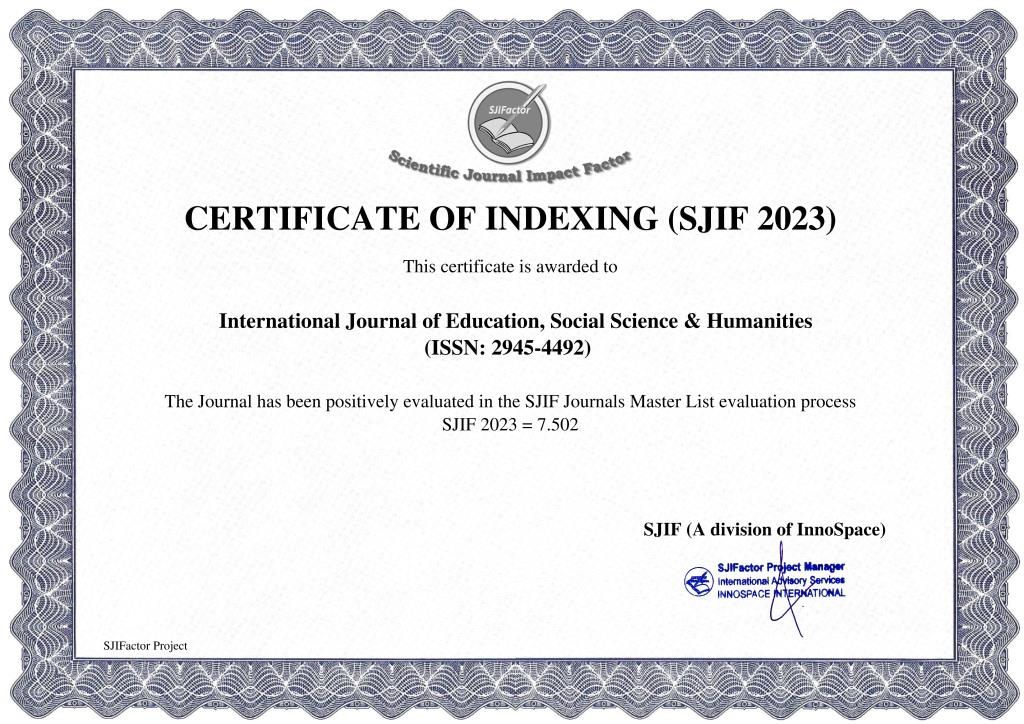LEXICO-SEMANTIC FEATURES OF MODAL VERBS IN FAIRY-TALES (ON THE EXAMPLE OF ENGLISH AND UZBEK FAIRY-TALES)
Keywords:
Fairy-tales, lexical resources, lexico-semantic features, modal verbs, similarity, vocabulary usages, Uzbek, English languages.Abstract
The general concept of modality has its roots in philosophy. This idea relates to the interaction between the world and the expressed concept in its broadest definition. Since language is a means of expressing modality, linguists and philosophers of language have both paid close attention to this issue. The study's focus on the extremely broad category of modality in linguistics, which reflects the varied facets of communication. This study examines the lexico-semantic characteristics of modal verbs in fairy tales (on the example of English and Uzbek Fairy-tales
References
Yakubov, J.A. (2000). Semantic features of logic and linguistic representation of the modality category (pp. 62, 123, 224). Tashkent: Science.
Folktales of the British Isles. - Moscow: Raduga Publishers, 1999 y
Khusainova, L. Yu. Method of teaching foreign languages using tecnical
equipment / L. Yu. Khusainova // Archivarius. – 2020. – No 3(48). – P. 36-41
My favorite fairy Tales. - Москва: Издательства «Иностранный язык», 2007.
T.A.Van Dijk, Discourse Studies and Education. The Hague, 1981, pp. 1-26.
Carroll L. Alice's Adventures in Wonderland. - M.: PROGRESS PUBLISHERS, 1967. - 235 p.
Khusainova Leyla, Mamatkulova Komila. (2021). Communicative Competense and Ways to Reach it in Teaching Foreign Languages. Annals of the Romanian Society for Cell Biology, 7098–7109.














